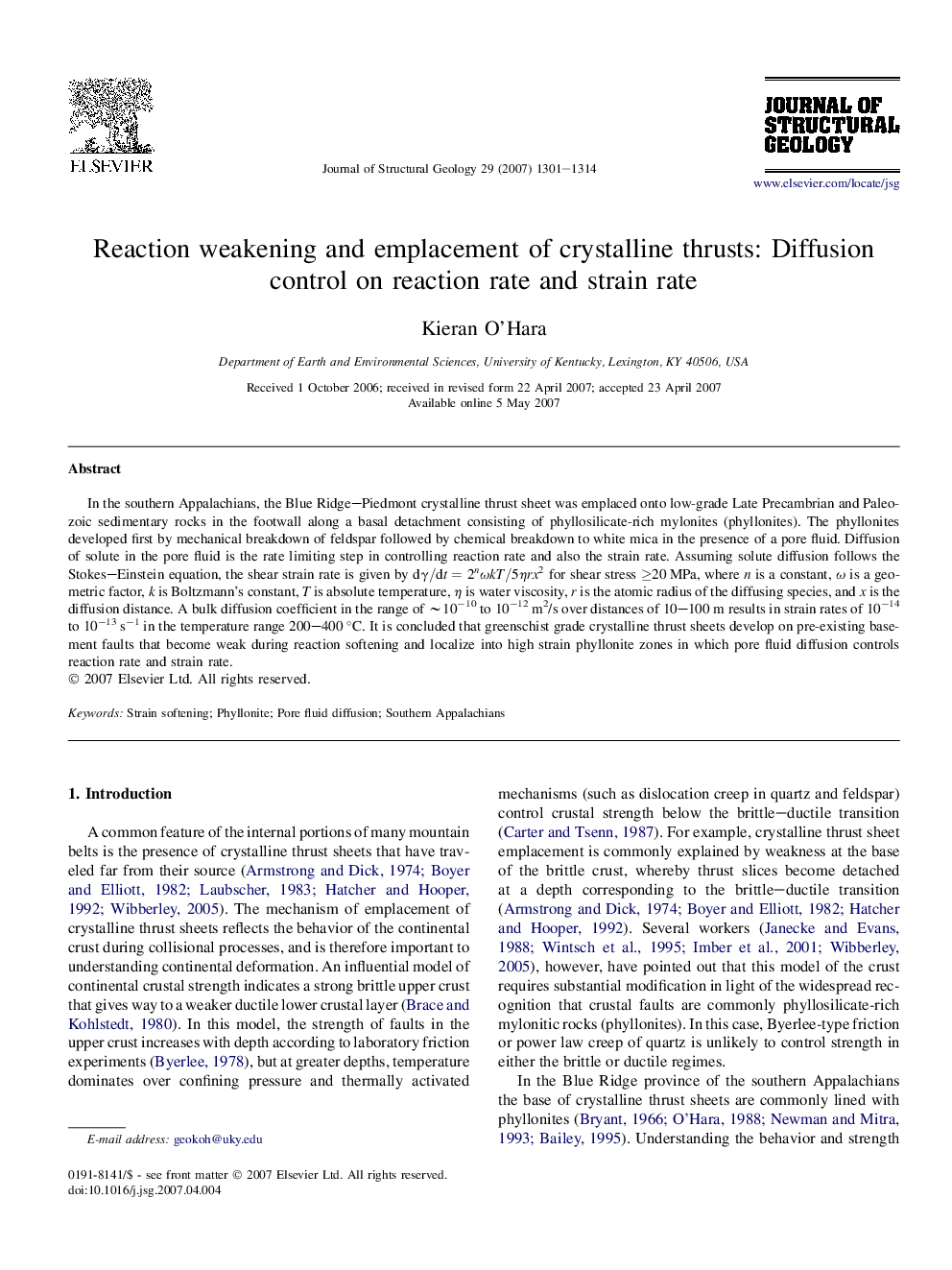| Article ID | Journal | Published Year | Pages | File Type |
|---|---|---|---|---|
| 4734389 | Journal of Structural Geology | 2007 | 14 Pages |
Abstract
In the southern Appalachians, the Blue Ridge-Piedmont crystalline thrust sheet was emplaced onto low-grade Late Precambrian and Paleozoic sedimentary rocks in the footwall along a basal detachment consisting of phyllosilicate-rich mylonites (phyllonites). The phyllonites developed first by mechanical breakdown of feldspar followed by chemical breakdown to white mica in the presence of a pore fluid. Diffusion of solute in the pore fluid is the rate limiting step in controlling reaction rate and also the strain rate. Assuming solute diffusion follows the Stokes-Einstein equation, the shear strain rate is given by â
γ/â
t=2nÏkT/5ηrx2 for shear stress â¥20 MPa, where n is a constant, Ï is a geometric factor, k is Boltzmann's constant, T is absolute temperature, η is water viscosity, r is the atomic radius of the diffusing species, and x is the diffusion distance. A bulk diffusion coefficient in the range of â¼10â10 to 10â12 m2/s over distances of 10-100 m results in strain rates of 10â14 to 10â13 sâ1 in the temperature range 200-400 °C. It is concluded that greenschist grade crystalline thrust sheets develop on pre-existing basement faults that become weak during reaction softening and localize into high strain phyllonite zones in which pore fluid diffusion controls reaction rate and strain rate.
Related Topics
Physical Sciences and Engineering
Earth and Planetary Sciences
Geology
Authors
Kieran O'Hara,
